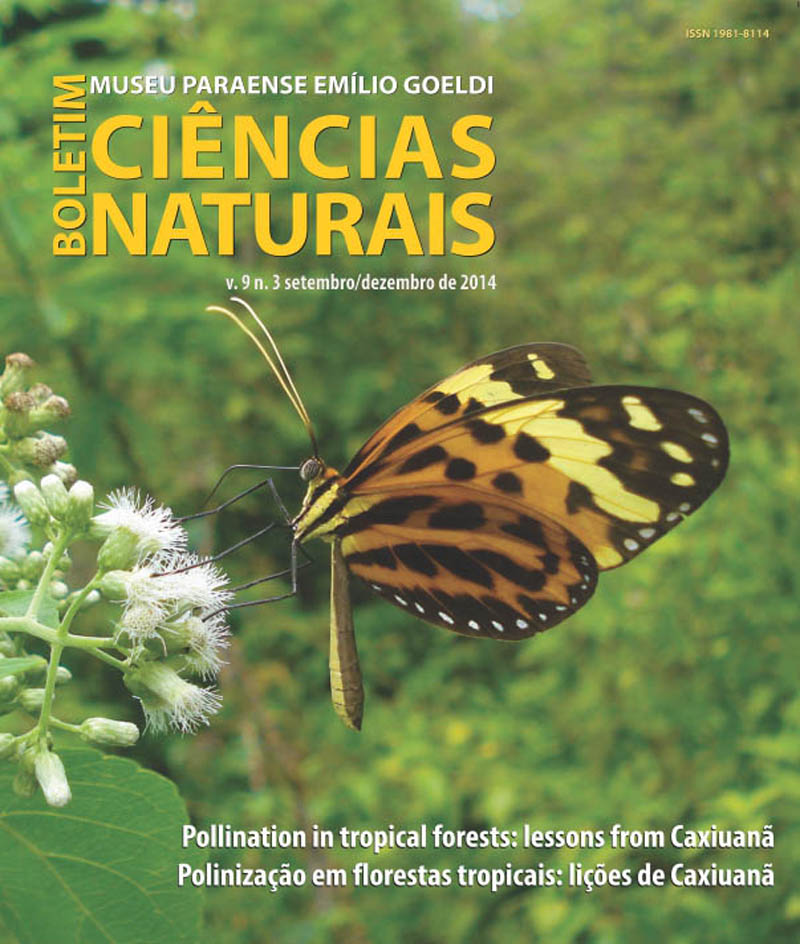Floral biology and nectar production dynamics of Pachira aquatica Aubl. (Malvaceae) in the eastern Amazon
DOI:
https://doi.org/10.46357/bcnaturais.v9i3.505Keywords:
Nectar removal effects, Sugar production, Standing crop, Cross-pollinationAbstract
Pachira aquatica is a Neotropical tree of economic importance for local communities, although little is known about its flower biology especially flower rewards. This study aimed to analyze some aspects of flower biology of this species, focusing on nectar production dynamics We measured nectar production and analyzed the effect of nectar removal and cross-pollination on sugar production and standing crop (the amount of nectar present in a flower exposed to pollination at a given moment). We found that P. aquatica has large, brush-type, perfect flowers, with white colored petals, red stamens and a strong floral scent. Flowers are protandrous and dichogamous. Pollen viability is about 96%. Anthesis is nocturnal and asynchronous. The nectar is relatively abundant (99.8 ± 118.5 μL) and diluted (15.2 ± 4.7% p/p) and its production increases in the morning period. Neither nectar removal nor cross-pollination affected sugar production. Standing crop was not significantly different from the control, indicating that there is probably a low visitation rate. Both flower and nectar production characteristics indicate that this species has the potential to be visited by different flower visitors, especially bats, birds and bees.
Downloads
Published
Issue
Section
License
Publication means fully assigning and transferring all copyrights of the manuscript to the journal. The Liability Statement and
Assignment of Copyrights will be enclosed with the notice of acceptance. All the authors must sign the document and return it to the journal.






